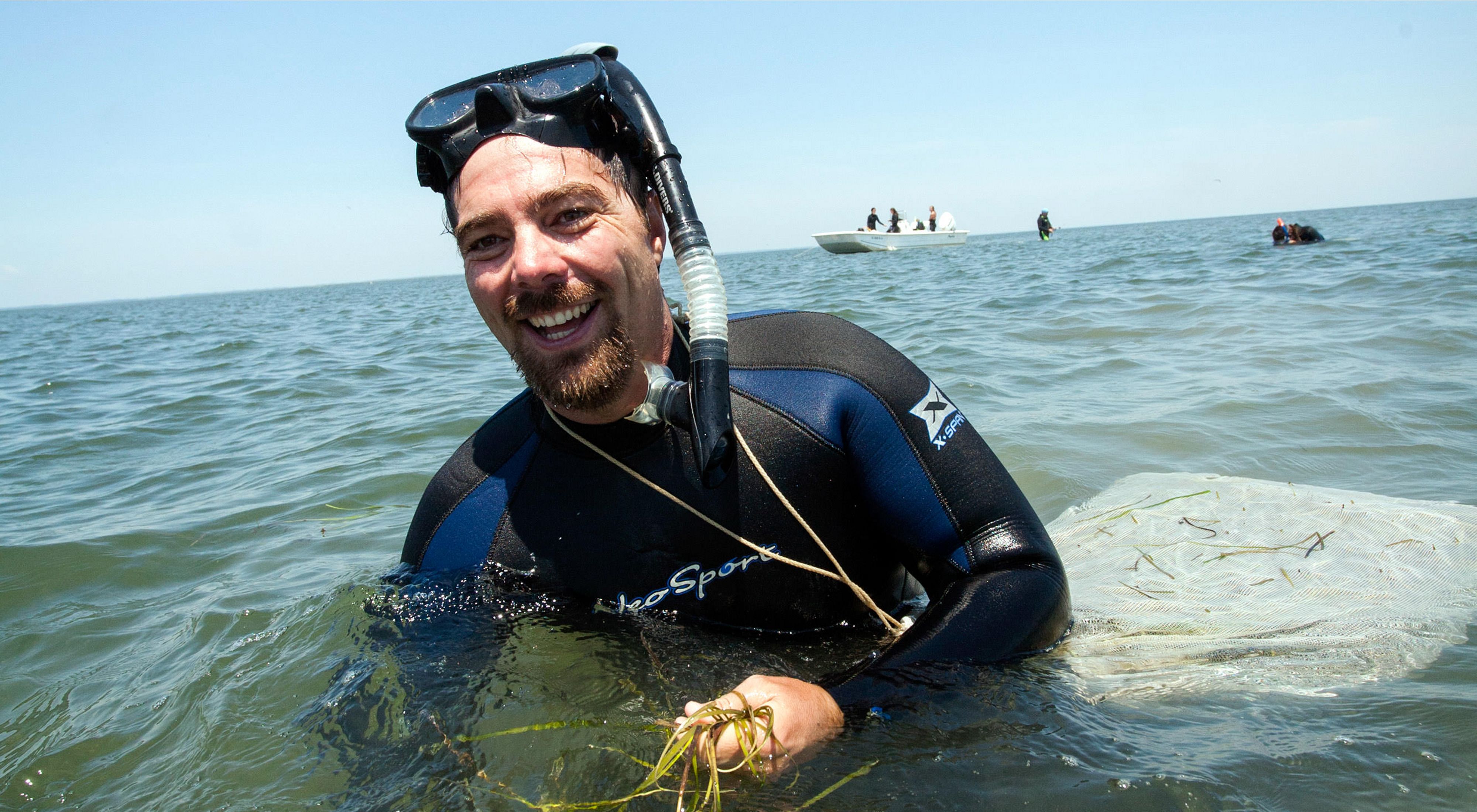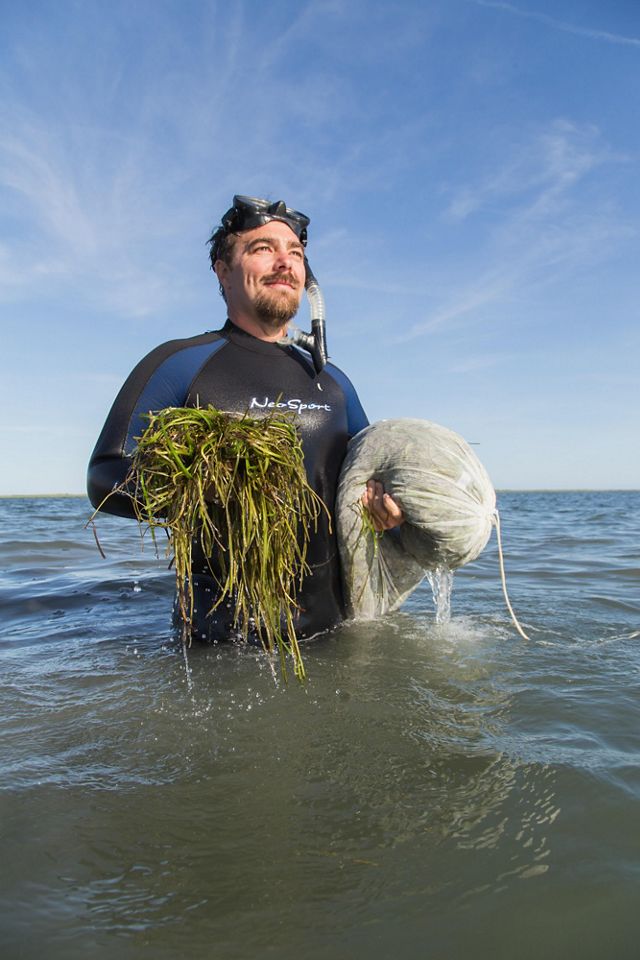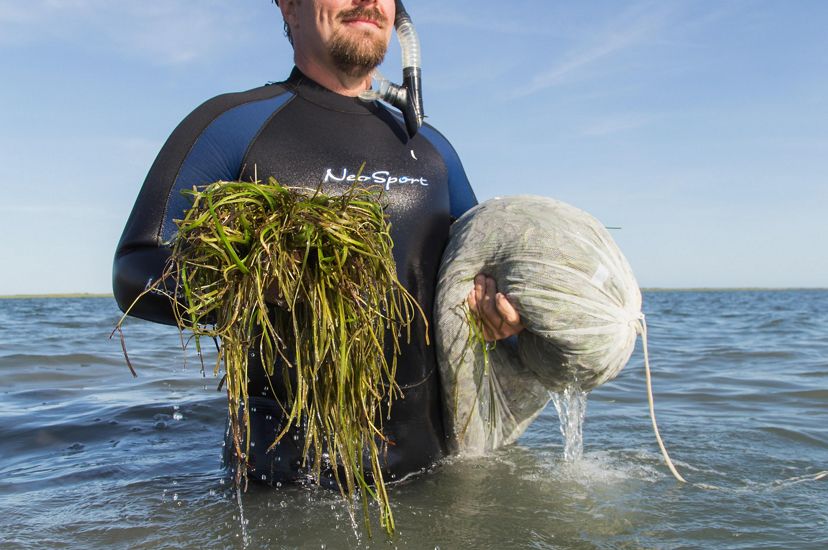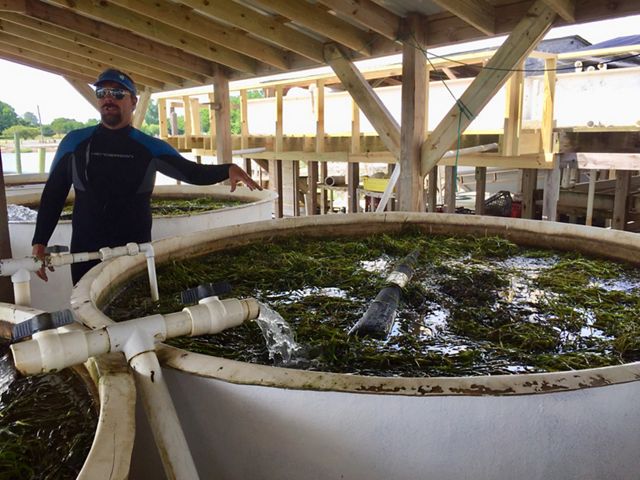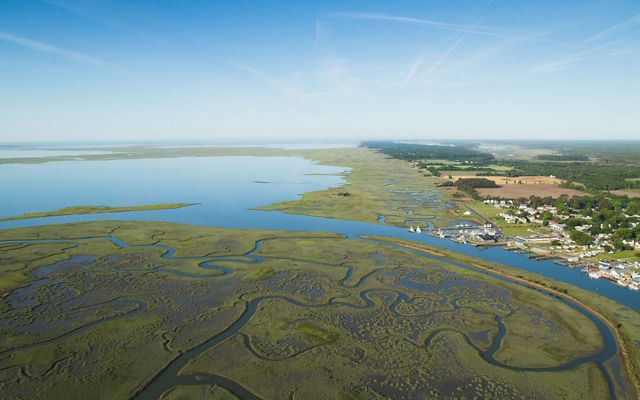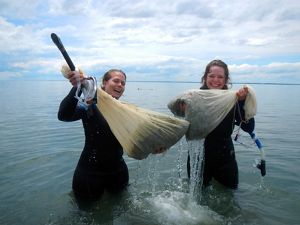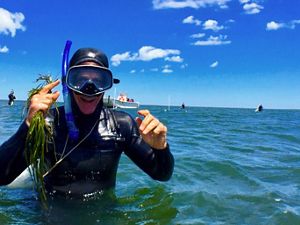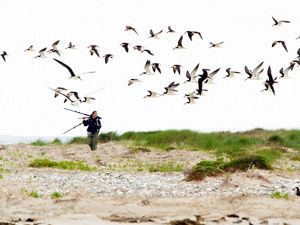Virginia’s Island Guy
Raised near Virginia’s islands, Bo Lusk is now saving them.
Summer 2020
Bo Lusk is a scientist working at The Nature Conservancy’s Virginia Coast Reserve, a string of 14 barrier islands that run along more than a third of the state’s Atlantic coast. Accessible only by boat, the 40,000-acre reserve is celebrating its 50th anniversary this year. It’s the site of several important efforts to restore marine habitats, including oyster reefs and scallop beds, as well as a massive volunteer effort to bring back eelgrass, which was wiped out by disease and a hurricane in the 1930s. Lusk has worked for TNC since 2007, but he’s lived on the Eastern Shore of Virginia his entire life.
Nature Conservancy: Tell us about Virginia's Eastern Shore.
Lusk: Considering that we’re smack dab in the East Coast of the U.S., we’re very rural. You’re not real far from anywhere, but you feel like you’re in the middle of nowhere.
What makes the barrier islands in Virginia different from other islands on the east coast?
I was born in 1975. Only five years earlier, TNC had made its first land purchase here. The environment I grew up in, and who I am and what I’m doing today, was really shaped by the fact that TNC started its work here in 1970.
It was a time when people were buying up large tracts of land on barrier islands all throughout the East Coast and developing them. Ocean City, Maryland, down to Hilton Head, South Carolina—these are all barrier islands that just got completely built up. And that was what was proposed for a lot of our barrier islands here. I’m growing oysters off the edge of a marsh on Smith Island where the airport was going to be. They were going to fill in that marsh and put a runway on it. It blows my mind.
Today, we’re the largest protected stretch of coastline in the U.S. I grew up in a very different place because of what TNC did.
Quote: Bo Lusk
It’s sort of like throwing a big Tums in these bays to help out our shellfish.
There’s this kind of epic story about eelgrass being decimated by disease and a hurricane in the 1930s, and then more than half a century later, somebody noticing a single patch of eelgrass that had returned to one of the bays.
Around the time I graduated from college, 1997, they found that first patch of grass. Today, we’re up somewhere around 9,000 acres.
That expansion came thanks to a lot of hard work by the Virginia Institute of Marine Science, plus help from TNC and volunteers, but the eelgrass also really took off on its own, right? How big a deal is that?
To have zero acres for almost 70 years, and then to suddenly start counting in thousands of acres, is nuts. That grass has been there for a few years now, and as it fills in and fish and animals start to find it, the system starts to adapt to having this whole community of marine life back in it.
So when you go out and swim over a nice, healthy sea grass meadow, what do you see?
(Laughs.) Grass. Grass in your face. There’s all kinds of marine life, but you don’t necessarily see as much as you might think, because everything’s got a great place to hide. I mean, that’s the point, right? But it’s kind of crazy to be in this sea of waving green ribbons, knowing that only 20 years ago it was just mud.
Quote: Bo Lusk
These islands are moving. And that’s what they’re supposed to do: Part of what a barrier island does is it migrates.
Get the Magazine
Become a member of The Nature Conservancy and you'll receive the quarterly print magazine
Subscribe nowBesides providing habitat, what makes sea grass so special?
We’re learning more about why it’s so special all the time, and about how much this grass does for the system. It helps with coastal resilience, because as waves roll across these shallow seagrass meadows, that grass takes a lot of the energy out of them, and it can help to moderate shoreline erosion rates.
The grass also captures a lot of suspended sediment. That ends up clearing the water, so you’ve got more light for the plants.
As ocean temperatures are increasing around the planet, that’s accompanied by increasing ocean acidification [caused by rising levels of carbon dioxide]. But as grass is photosynthesizing, it’s absorbing carbon dioxide, and that’s actually changing the pH of the water. It’s sort of like throwing a big Tums in these bays to help out our shellfish.
Can sea grass help address climate change?
Well, another big thing that sea grasses do is sequester carbon, and they do it at a really high rate. A sea grass meadow in the right conditions can sequester more carbon per acre than forests on land. The Virginia Institute of Marine Science, University of Virginia and TNC are working together with the state now to try to start the world’s first sea grass-based carbon credit project.
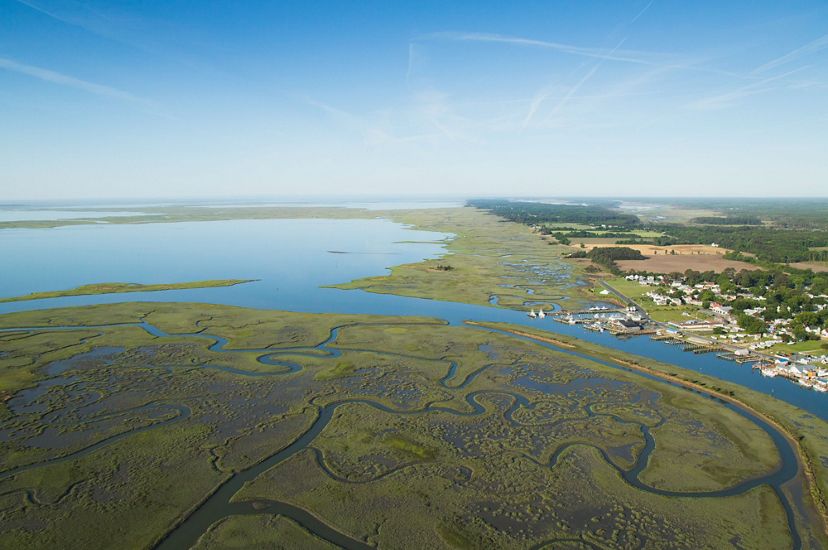
The Virginia Coast Reserve has gotten visitors from all over the world who are working on or thinking about their own sea grass restoration projects—in Europe, China, Australia and New Zealand. Why is this important?
There’s a bigger story: We’re losing sea grasses around the planet at a rate of a football field every half hour. And they’re really important. A huge proportion of the world’s largest fisheries—so many of those fish depend on sea grasses at some point in their life cycle, somewhere in the world. There are lots of island communities whose source of protein is stuff that you can wade out into the sea grass and harvest by hand. So getting sea grass restored—or at least stop losing it around the world—is a big deal.
Let’s talk about oysters. Ecologically, and culturally, they’re important. But you’re also showing that oysters can do important work to protect both the bigger barrier island ecosystems and the human communities that are built there.
Figuring out how to use nature-based solutions to increase our coastal resilience has become really important for TNC. We can now design oyster reefs in a way that they help to moderate shoreline erosion.
We are blessed here on the Eastern Shore to have these big, wide, long salt marshes. And those salt marshes are really the key to protecting our coastal communities in big storm events. So instead of building an offshore breakwater, I can build an oyster reef and, right off the bat, have this surface that’s taking the punch out of waves before they hit that marsh behind it.
What keeps you up at night? What’s the biggest challenge for the future?
This system is really dynamic. When I’d go out to the islands as a kid in the summer, one of the things I was most excited to do was see how an island had changed since I was there the previous week. They change that fast. They’re moving. And that’s what they’re supposed to do: Part of what a barrier island does is it migrates.
The Conservancy has historically managed these islands hands off. This is a natural barrier island system, and the healthiest thing for the whole system is to let these islands move the way they want to move. But it looks like the increased pace of sea-level rise, and increased frequency of storms, is changing the way that these islands naturally migrate.
How fast can this system adapt to that change? And what, if any, way is the right way to step in? The best thing we can do is make sure that all the parts of the system are there. Before, we didn’t have sea grass, we didn’t have oysters. Now, we’ve got them back. What other parts of the system ought to be there, and how can we manage them as loosely as possible, to let them move where they want to move?
